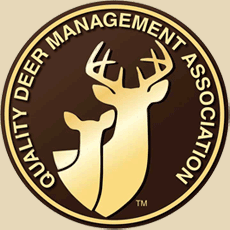Hunting feral hogs is one of the fastest growing past times among hunters. It is believed by many that this is THE greatest factor in the rapid spread of the feral hog across the southeast and elsewhere. As hunters began transplanting hogs from areas where they had traditionally lived to areas where hunters wanted to add to the ecosystem and give them something else to hunt and to do so year around. The problem is that no one realized the ecological problems that hogs could possess when this began a few decades ago.
Hunting feral hogs is indeed a lot of fun. Personally, I find hunting feral hogs one of the most enjoyable pastimes in hunting. I would just about rather hunt hogs than most other species. They are intelligent, wary, challenging and great table fare. What’s not to like about hunting them? Other than the damage they do to the ecosystem there is little to discourage hunting them.
Methods in hunting feral hogs mimic the tactics of other big game tactics. Stand hunting in likely areas where sign is present. Spot and stalk, and still hunting are some of the most popular methods. In the thick areas of the southeast, most successful hunters tend to use stand hunting with the addition of some sort of bait to entice the hogs to come out of the thickets and out in daylight to offer a shot.
Baiting hogs normally consists of using either shelled corn or cob corn. There are different aspects of application, but corn rules in the baiting world for hogs. Some will prefer cob corn because it takes the hogs longer to consume it, while others prefer the shelled corn because they can use it in feeders of all types. Using corn to draw the hogs into an area and to keep them in the area is very effective. Placing tree stands near corn makes for effective tactics. It is true that hunting them in the mornings and afternoons is effective. Hogs nocturnal nature makes afternoon hunts more optimistic.
High quality optics are essential for these late evening offerings. Last light is normal, being able to see the hogs and place the bullet where needed is essential. It is difficult to see the hogs late in the evening and poor optics make it frustrating and difficult to make good ethical shots.
Guns for feral hogs begin with the thirty caliber guns. Many are popular, the .308 has a large following for hogs as does the .30-06. In magnum guns, the 7mm Magnum is king. Lately, some of the large bore rifles like the .45-70, and the .444 Marlin are taking hold as great hog guns.
These big bore guns typically are offered in lever actions, and these are excellent for spot and stalk in the southeast river drainages. Close quarters and big bullets with fast actions are the most necessary types of guns for these situations.
Spot and stalk and still hunting in these places are similar. Whether you see the game first and try to move in, or plod along and work your way into range of feeding or resting feral hogs the tactics are so similar. More success seems to be with the still hunting methods in likely areas. Personally, moving slowly along drainages and creeks is my preferred method when still hunting. If ample hog sign is present, moving slowly during the winter when leaves are down, looking carefully for resting or feeding hogs can be very lucrative.
Another fast growing method of hunting hogs is the use of well trained dogs. Breeds vary widely in hunting hogs, from hounds to different cross breeds of pit bulls and others. But basically there are chase dogs trained to scent and chase the hogs until the hog is bayed, then handlers bring in a catch dog that will be released into the bayed hog and catch the hog. Most catch dogs are trained to catch the hog by the ear. The dog will not let go of the hog until the handler releases the dog from the hog. Most of these dogs wear Kevlar vests to protect the dog from the tusks of the hog as it tries to escape. Once the hog is caught, handlers will either dispatch the hog with a handgun or knife or in some instances, tie the hog up and carry it out alive and dispatched later.
Dog handlers do not like to allow the use of rifles or shotguns to kill the hogs when their dogs are around and this makes sense with the chaos of chasing and catching hogs. The handgun hunter will move to within feet of the hog and shoot it in the head at extremely close range.
Hunting feral hogs is indeed a lot of fun and stretches the hunting season into the rest of the year. Most states have no season and no limit on killing feral hogs. A point of warning here, the spread of hogs is largely attributed to the hunters who have wanted more game to hunt. This spread has caused tens of millions of dollars of damage. Hunt hogs all you can, just do not transplant them into new areas to give yourself something else to hunt.




